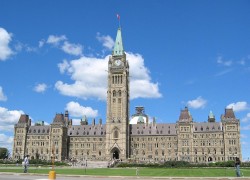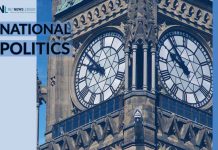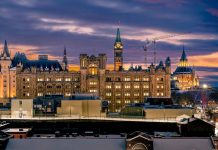
OTTAWA – Leaders Ledger – In what may serve as the early political shocker of 2013 Alison Redford’s Conservative provincial government in Alberta announced last week that it would collect $6 billion less than expected this year from oil and gas royalties while running their fifth consecutive yearly budget deficit in a row. How can this happen to a province that has so much oil wealth? The answer is simple, bad government and bad choices.
Early Political Shocker
It is estimated that the Alberta oil sands hold at least 1 trillion barrels of crude bitumen oil (a mix of sand, oil, minerals, and water), but maybe as much as 2 trillion barrels according to some industry sources. In 2007 it was estimated that extractive activity in the Alberta oil sands produced more than 700,000 barrels of oil each day and the total reserves in Alberta’s oil sands are thought to be equal to those in the rest of the world – combined.
Royalties collected by the Alberta government, or taxes on the lease, sale and shipment of the oil from the province, generally amount to about 30% of all government revenue in that province but the royalty haul is tied to the price of the oil being sold. The problem, at least this year, is that the Alberta government had projected their royalty revenue based on the price of oil being around $90 a barrel, but the price for oil sand bitumen has plummeted to just over $50 per barrel in the last year due to increased domestic production in the United States. That leaves a big fiscal gap to say the least.
[sws_pullquote_right]If you’re scratching your head about this then you’re not alone [/sws_pullquote_right]
If you’re scratching your head about this then you’re not alone. How can a Canadian province of less than 4 million people and sits on the world’s largest known crude oil deposit be struggling financially? It wasn’t easy, but it’s taken 42 years of Conservative rule and bad decisions to get to this point.
The Constitution Act states that natural resources belong to the provinces and that it is their right and responsibility to maintain, develop, and profit from their presence as they fit. While the normal federal taxes apply to transactions for oil like other goods and services Alberta is the only government that can collect royalties directly from the extraction and sale of each barrel. The Government of Alberta alone, and lead by Conservatives for 42 consecutive years, must set the royalty rate and decide how to use that money – to spend it, give it away, or invest it as they see fit. Unfortunately, but not surprisingly, the Alberta Conservatives have made some terrible decisions.
Generally speaking, the Alberta Conservatives have chosen to spend their royalty wealth mostly, which is why there is almost nothing left in the bank today. While every provincial government in Canada must deliver the same essential services to the people they serve (ie: health care, education, infrastructure) the others must almost exclusively use tax revenue collected from individuals and corporations to pay their bills. Alberta could do the same, but has chosen a different path. Alberta’s Conservatives have made that province almost completely dependent on oil revenue to fund basic services by eliminating the provincial sales tax and reducing corporate and personal income rates to some of the lowest levels in North America. It’s been an unnecessary and reckless gamble, and it is one that is now coming up ‘craps’ for Ms. Redford’s Conservatives.
The opposite development approach, and a very ‘sustainable’ one, can be found in Norway. The Norwegian government, with essentially the same power to regulate industry and collect royalties as the Alberta government and with just 2 million more people, has had no such difficulty in balancing their books. Instead of lowering their tax rates to zero or as low as possible the Norwegian government has, since 1990, maintained moderate but competitive tax rates and saved most of their royalty in what is known as a ‘sovereign wealth fund’ that is invested in various assets around the world. As of November 2012 the assets of this fund, known officially as the Government Pension Fund of Norway, totalled approximately $660 billion USD worldwide, and had a yield 4.7% in the last quarter – returning $29.3 billion to the people of Norway in the July to September 2012 fiscal quarter alone. By comparison, total program spending by Redford’s Conservative Alberta government on all goods and services such as health, education, and infrastructure was $41.1 billion – for all of 2012.
So the questions for Albertans at this point in time, and for the rest of Canadians soon, is do we want to be stuck in endless Conservative ‘Made-In-Canada’ boom and bust cycles with low taxes, huge deficits, and no savings, or is something more like Norway’s more prudent and sustainable approach to natural resource development a better fit? I think you know which approach New Democrats tend to favour.
John Rafferty MP






